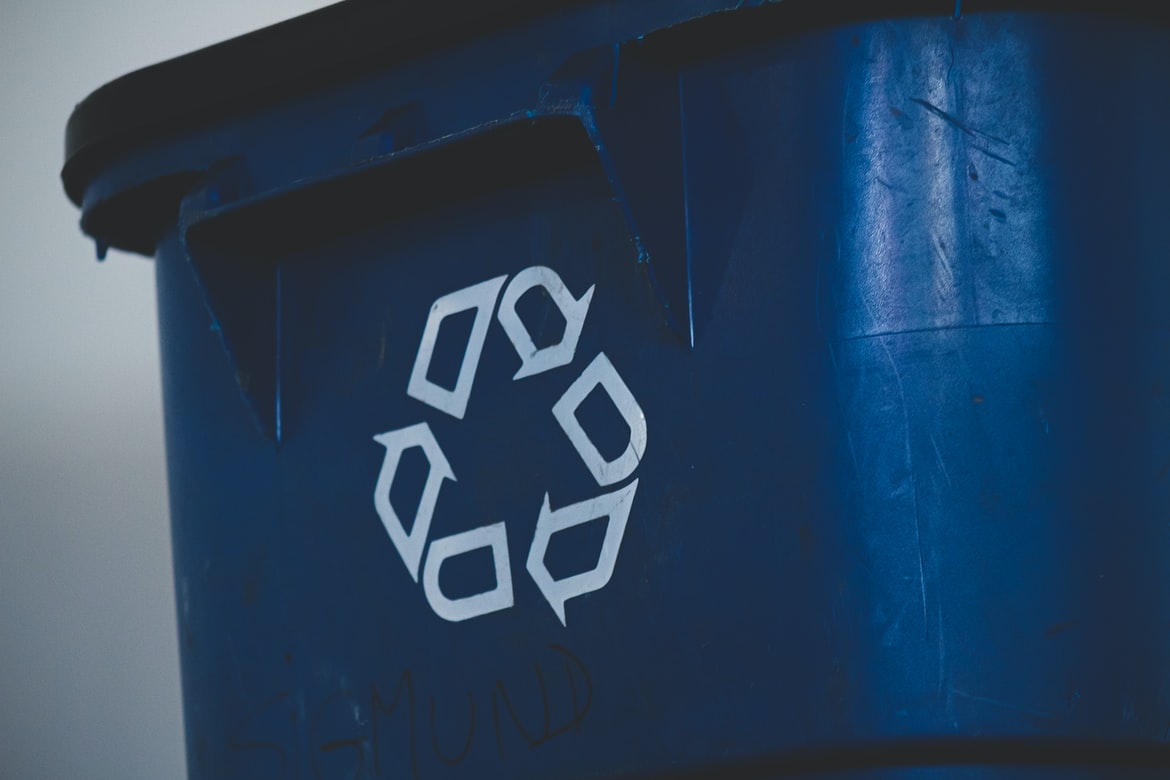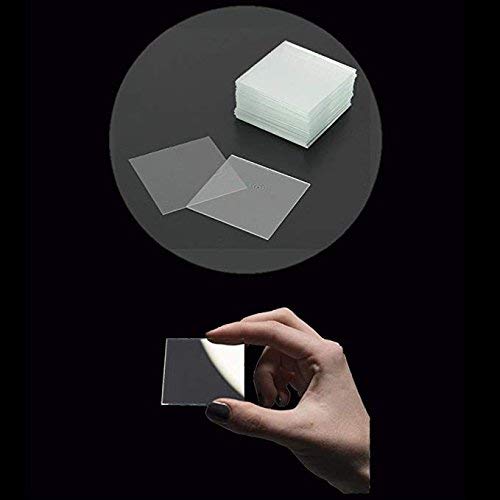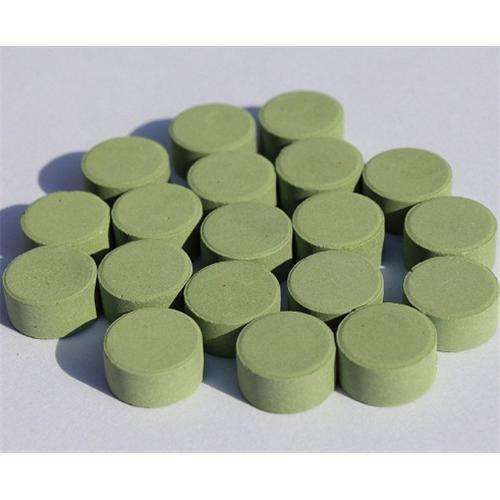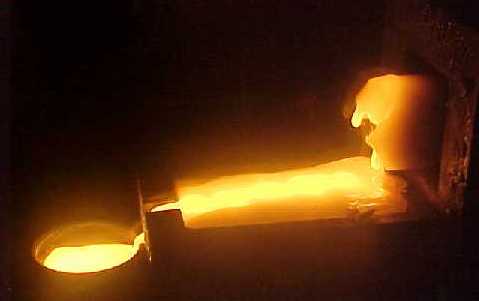Thermal Spraying Treatment for the Surface of Aluminum Profiles
Surface spraying is a widely used aluminum profile surface protection method. Spraying technology can generally be divided into thermal spraying and cold spraying. The most notable feature is its simple implementation and high efficiency. In this article, we briefly introduce the thermal spraying process for the surface of aluminum profiles.

Thermal spraying is an important technology in the field of surface engineering. First, the sprayed material is heated by a heat source such as flame, plasma, etc. to reach a molten or semi-melted state, and then sprayed and deposited on the surface of the aluminum profiles at a certain speed through a specific equipment to generate a coating of a certain thickness. Thermal spraying technology can quickly and large-scale surface coatings with specific functions, such as thermal barrier, wear-resistant sealing, high-temperature oxidation resistance, conductive insulation, far-infrared radiation resistance, etc. Thermal spraying technology has the advantages of various applicable materials, high work efficiency and low cost.
Thermal spraying can strengthen the surface of aluminum profiles and improve the wear resistance and corrosion resistance of the profile surfaces. Thermal spraying has been used for surface modification of aluminum profiles. Through thermal spraying treatment, the aluminum of the surface coating and the magnesium element of the aluminum-magnesium alloy in the subsurface layer can be interdiffused to form β-Mg17Al12. When the content of β-Mg17Al12 is within a certain range, the mechanical properties of aluminum profiles can be improved and their corrosion resistance can be improved. By thermal spraying aluminum, the pores between the aluminum profile substrate and the coating can also be eliminated, which acts as a closed protective layer. The ceramic coating is formed on the surface by plasma arc spraying. The ceramic coating is far superior to the metal coating in many properties, and the surface hardness, wear resistance and corrosion resistance are significantly improved after treatment. Commonly used surface treatment ceramic materials for aluminum profiles are ZrO2, CrO, TiO2, MgO, Al2O3, etc. Studies have shown that compared with the substrate, the density of the ceramic coating has been significantly improved, the wear resistance has been increased by nearly five times, and the corrosion resistance has also been greatly improved.
For more information, please visit http://sputtertargets.net/.
Target Reclaim Service for Tantalum Sputtering Target
Metal sputtering targets are generally a product in which a pure metal of the same element is pressed and formed by forging or casting. The reason why pure metal is used is that sputter deposition has higher requirements on its raw materials (generally 2N~5N, strictly 6N), and the purity of the sputter coater target directly affects the purity of the coating.
Tantalum is a rare metal material with a content of only 0.0002% in the earth's crust, and because of the wide range of applications of Ta, the pure tantalum on the market is often in short supply, and the price naturally rises. The purity requirements of tantalum sputter targets in the coating industry are generally 99.9~99.999%, so pure tantalum must be purchased. However, in addition to this special industry, other industries do not have such high requirements for the purity of tantalum, so recycling tantalum actually has a wide range of applications and many needs.

It is a good method to use the used tantalum target for the recovery of tantalum metal. On the one hand, the purity of the sputtering material is high, so the process of recovering the relatively high purity tantalum is simpler; On the other hand, the utilization rate of the planar metal target is not high, and the used target is a good raw material for recovering tantalum and can obtain as much tantalum as possible.
The sale of discarded (waste) tantalum sputtering targets to the scrap metal market for recycling has created an important source of tantalum metal for industrial needs. Medical implants, electronic alloys, turbine alloys, and tooling industries all have a large demand for recycling tantalum. The recycling of this supply chain is important for these markets, and if this supply is no longer available, then these industries will have to buy pure tantalum from tantalum metal producers. Without constraints and competition, tantalum metal producers have full control over prices. Tantalum prices may soar in the event of a supply shortage.
In many cases, tantalum metal producers do not use used tantalum targets directly to produce new ingots and billets. The reason we mentioned at the outset is - recycling tantalum does not meet the demanding requirements of the sputter coater industry for its purity. But the recovered waste tantalum is pure enough for other industries. When these industries buy properly processed tantalum waste instead of pure tantalum, they can save a lot of money.
For more information about sputtering target reclaim service, please visit https://www.sputtertargets.net/reclaim-service.html.
Problem Lithium-ion Batteries in the Upcoming Years
The world's technology has advanced tremendously since the beginning of time. The 21st century can be called the "technological era"-We are now in an age where our refrigerators can communicate with everyday life, Cellular devices are also considered to be “mini laptops '', and cars are starting to drive themselves. All the things that seemed impossible in sci-fi movies are now becoming reality. Before we go on, I'd like to ask you a question. Have you heard of lithium-ion batteries? Can you name a few devices that use these batteries?
Countless new technologies are gradually filling our lives, but many times, consumers don't really know the materials that go into these devices. In this article, I will inform you about the technological problem Lithium-ion batteries will pose in the upcoming years, what they are, how they are used, and how they are made.

Lithium-ion batteries are rechargeable batteries, which mainly rely on lithium ions to move between the positive and negative electrodes to work. They are used in products such as toys, electric vehicles, headphones and laptops. Lithium-ion batteries are made up from critical raw materials, also known as CRMs. CRMs are very important to the environment in which we live in, but because of their limited supply, they do pose a high risk in the development of lithium-ion batteries.
The scarcity of CRMs connects with the lithium-ion batteries because a few of the materials that make up the compound for the batteries will be low in years to come. One main important material that makes up for some of the lithium batteries is cobalt, a metal that comes from the earth’s crust. The metal is mined, cleaned, then shipped all over the world and is put into lithium-ion batteries to help power our everyday devices. If the supply for cobalt is low and the demand is high, then we have a problem.
If I could take the time to do research to make this problem more efficient, I would take the time to look at where the most of our CRMs come from. I would also study how the materials are mined, cleaned, and transported. With that being stated, if I had the financial means to help with this situation, I would use the money to purchase and make an invention of a robot that is capable of mining CRMs such as cobalt. As of now there are humans that do hard labor to get the raw materials, thus making the work very hard and even life threatening. With the use of the mining robots, it will limit the need for humans to do the hard labor. The industry utilizes robots all the time when doing hard labor. If I could produce a mining robot, I believe that it could revolutionize the way that things are being found underground. I also believe that it could find even more raw materials. I would want to do this research personally to relieve people from the dangers of finding such materials and to keep the world powering on.
How to rid our oceans of plastic?
In the past decades, with the development of technology, we have a better understanding of the environment. However, are there many advantages or disadvantages brought about by rapid development? We do get a more convenient and comfortable life because of technological progress, but at the same time, global warming also affects the environment of our planet. The fact is that although not all of these advanced technologies are bad, they do require costly social adjustments.
“Natural resource managers need proactive, flexible adaptation strategies that consider historical and future outlooks to minimize costs over the long term. Many organizations are beginning to explore these approaches, but implementation is not yet prevalent or systematic across the nation.”(Weiskop, et al. 2020) However, technological advances like solar panels, wind turbines, and nuclear enery, are not yet readibly available to everyone.

These are only technological advances on land, our aquatic ecosystems also suffer from noice pollution, trash pollution, and chemical pollution. I think that we should conduct more reseach on the effects of our presents on the aquatic environments and find a way to minimize pollution. Marine ecosystems are sensitive to change. Weiskop and et al. discuss how, “Marine organisms have also demonstrated range shifts, in somecases at faster rates than observed in terrestrial systems and at pacewith climate velocities.” The change is species ecosystems are having a dramatic effect on them, some more deranged than others. “Arctic marine environments are experiencing changes to sea ice cover, increasing temperatures, and ocean acidification, resulting in range shifts for marinefish, arthropods, and marinemammals.” (Weiskop et al. 2020) The change is species ecosystems are having a dramatic effect on them, some more deranged than others. “Arctic marine environments are experiencing changes to sea ice cover, increasing temperatures, and ocean acidification, resulting in range shifts for marinefish, arthropods, and marinemammals.” (Weiskop et al. 2020) The melting of sea ice is affecting how polar bears hunt and how seals protect their young. The beaching of coral reefs is causing tropical fish displacement, and many species are struggling to fine a save sanctuary. Some temperate marine eco-systems are‘tropicalizing’, with herbivorous tropicalfish expanding poleward, causing decreases in macroalgal plant communities (Weiskop et al. 2020). How can we prevent these changes and minimine the spread of pollution in our oceans?
It has been estimated, probably conservatively, that each year, at least 100,000 marine animals and 1,000,000 sea birds are killed by plastic waste, either through entanglement or ingestion (Rhodes, C.J. 2019). We need to find a way to reduce these numbers and remove plastic from the ocean. The Ocean Cleanup Project is a non-governmental environmental engineering organization based in the Netherlands that strives to develop technologies that help remove plastics present in the ocean.Their goal is to “employ barriers placed in ocean gyres to collect marine debris, as the barrier is pushed by wind and current, and it is intended to emplace 60 such units in the Great Pacific Garbage Patch by 2021 to remove 50% of the debris there over a 5-year period (Rhodes, C.J. 2019).” This method can indeed help reduce marine pollution, but the cost is high, and it takes years of research to contribute to this change. "After several years of various tests, the prototype system encountered various operational problems and was eventually towed to Hawaii for maintenance and design improvements; however, it was pointed out that within 2 months of operation of the equipment, approximately 2,000 kilograms of plastic were recovered. (Rhodes, CJ 2019)." Although it did not last long, it did collect a lot of plastic.
Researching ways to reduce our presents on this planet is important because our carbon footprint has left an almost irreversible impact on the environments surrounding us. If we do not try to limit the amount of trash we emit, we will start to loose our beautiful world wonders faster than previously thought. It takes time and resources to create tools to help reduce the amount of plastic in our ocean. This form of technology is progress in the making. With time the kinks will be worked out and our oceans will be rid of plastic. Platic is only one form of pollution however, and scietist need to find ways to clean and prevent oil spills, chemical waste dumping, and micropastic emissions. Also the largest pollution to date is noise pollution. This is one of the hardest pollutions to reduce in our oceans. How can we made boats that are sighlet and do not radiate any form of noise? Noiseless aquatic vehicles with be a thing of the future, hopefully before we loose our majestic marine beasts.
Citation
Rhodes, C. J. (2019). Solving the plastic problem: From cradle to grave, to reincarnation. Science Progress, 218–248.
Weiskop, S. R., Rubenstein, M. A., Crozier, L. G., Gaichas, S., & Griffis, R. L. (2020). Climate change effects on biodiversity, ecosystems, ecosystem services, and natural resource management in the United States. Science of The Total Environment, 733, 2–18.
What is Indium Tin Oxide (ITO) glass?
The ITO conductive glass is formed by coating a layer of indium tin oxide (commonly known as ITO) film by sputtering, evaporation, or the like on the basis of a soda-lime-based or silicon-boron-based glass. Most electronic displays currently use ITO glass as their screen.
The ITO conductive glass applied to the liquid crystal display also needs to be coated with a silicon dioxide barrier layer before the ITO layer is plated to prevent sodium ions on the substrate glass from diffusing into the liquid crystal in the cell. The ITO glass substrate for liquid crystal display is generally ultra-float glass, and all the coated surfaces are glass float tin surfaces. Therefore, the final liquid crystal display will follow the direction of the float, and irregular ripples will occur regularly.

The main component of the ITO film layer is indium tin oxide. When the thickness is only a few thousand angstroms, the indium oxide has a high transmittance and a strong electrical conductivity. The ITO glass used in the liquid crystal display is such a conductive glass having a high transmittance. However, since ITO has a strong water absorption property, it absorbs moisture and carbon dioxide in the air and chemically reacts and deteriorates. It is commonly called "mildew", so it should be protected from moisture during storage.
The ITO layer is composed of many fine crystal grains, and the crystal grains are fissioned and become smaller during the heating process, thereby increasing more grain boundaries. When electrons break through the grain boundary, a certain amount of energy is lost, so when the temperature is below 600 degrees, the resistance of the ITO layer of the ITO conductive glass increases as the temperature increases. The characteristics of the ITO layer are related to the target type, temperature and mode of motion. It is possible to selectively change the characteristics of the ITO layer to obtain the desired ITO layer from these aspects.

Stanford Advanced Materials (SAM) Corporation is a global supplier of various evaporation materials such as metals, alloys, oxides and ceramic materials, which are widely used in multiple industries. We regularly update knowledge and interesting stories of sputtering targets on our website. If you are interested, please visit https://www.sputtertargets.net/ for more information.
What does ITO mean in chemistry?
Chemically speaking, ITO is an abbreviation for Indium Tin Oxides.
As a nano indium tin metal oxide, it has excellent electrical conductivity and transparency and can cut off electron radiation, ultraviolet rays and far infrared rays harmful to the human body. Therefore, indium tin oxide is usually sprayed on glass, plastic and electronic display screens, used as a transparent conductive film, while reducing the harmful electronic radiation, ultraviolet and infrared. Indium tin oxide sputtering target is the essential material for producing ITO film.

The real work on ITO film was at the end of the 19th century when a very thin metal film was obtained on the photoconductive material. Research on transparent conductive materials has entered a new era during the Second World War, mainly used in aircraft de-icing window glass. In 1950, the second transparent semiconductor oxide In2O3 was first fabricated. After the incorporation of tin in In2O3, this material becomes widely used in transparent conductive films and has broad application prospects.
Among the ITO conductive films, the Sn-doped In2O3 (ITO) film has the highest transmittance and the best electrical conductivity, and it is easy to etch a fine pattern in the acid solution, wherein the light transmittance is over 90%.
At present, the resistivity of the ITO film layer is generally about 5*10E-4, preferably up to 5*10E-5, which is close to the resistivity of metal. The transmittance and resistance of the ITO film are controlled by the ratio of In2O3 and SnO2, respectively. Increasing the ratio of indium oxide can increase the transmittance of ITO, usually SnO2: In2O3=1:9. Since the thickness of tin oxide exceeds a certain degree, the transparency is usually not good enough - although the conductivity is good.

With the rapid development of the display device industry, new requirements have been placed on the product performance characteristics of ITO films. At the same time, the in-depth development of ITO film preparation technology has made the needs of display devices possible.
Please visit https://www.sputtertargets.net/ for more information.
What is titanium alloy cold-hearth melting?
Titanium alloy cold hearth melting is one of the most commonly used methods for titanium alloy semelting, the other of which is vacuum arc remelting (VAR).
Titanium alloy cold-hearth melting is a process in which a titanium alloy is melted in a copper water-cooled hearth using a plasma arc or an electron beam as a heat source. After the metal is smelted, it flows from the hearth into the crucible to form an ingot having a good surface quality.

Electron beam cold-hearth melting
Compared with the other titanium alloy smelting technology, VAR, electron beam cold-hearth melting has many advantages:
1 It can utilize various forms of raw materials such as residual materials, loose titanium sponge and titanium shavings, and economical raw materials;
2 It can remove impurities in the titanium alloys such as high-density purities, low-density impurities and volatile impurities, so it is an important technology for the purification of titanium alloy materials;
3 It can improve the yield of metals by producing ingots of various cross sections.
In recent years, the development of electron beam cold bed furnace smelting technology is mainly manifested in the following aspects: 1 titanium sulphide directly smelting titanium ingot; 2 numerical simulation technology; 3 single alloy ingot smelting technology; 4 ingot surface melting repair technology; 4 large hollow ingot production technology.
Plasma beam cold-hearth melting
The plasma beam cold-hearth smelting technique utilizes a concentrated, controllable, and stable plasma arc to provide a smelting method for the heat source.
The plasma beam cooling bed smelting prevents the volatilization of higher volatility elements such as manganese (Mn) and tin (Sn) when smelting the titanium alloy, and precisely controls the element content of the titanium alloy; it can generate a high-speed and rotating ion beam, thereby the titanium alloy composition is more uniform. In addition, the plasma working environment is close to atmospheric pressure and thus is not limited by the raw materials; the plasma cold-hearth melting pool is large and deep, so that the solution can be fully diffused.
At present, titanium alloys produced by plasma cold-hearth melting technology have been widely used in the engines of US military aircraft.
Please visit https://www.sputtertargets.net/ for more information.
Related:
What is the commercial value of titanium? - Quora
How was titanium discovered? | History of Titanium – SAM Sputter Targets
Basic Requirements of High Quality Titanium Sputtering Target – SAM Sputter Targets